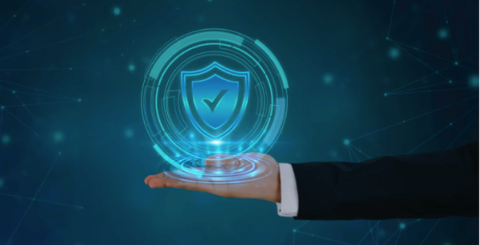6 Essential Policies For Building Effective IT Security Infrastructure

How ready is your organization for the changes that characterize IT security threats?
In today’s technological world, data security and business continuity have become more significant than ever.
Therefore, an IT security policy offers the best defense for your organization by providing a well-laid-down structure for the management of risks and compliance with defined regulations. It is about setting boundaries in a way that allows your team to identify risks and act accordingly.
In this article, you will discover six policies that can be of significant help to create a robust IT security framework for your organization, safeguarding it from existing and future cyber threats.
1. Cybersecurity Incident Response Policy
An incident response policy is a framework that can help define and organize the process of addressing security incidents in your company.
This document discusses the measures you must follow in response to security threats so that the appropriate actions are taken promptly.
Furthermore, a well-defined incident response policy facilitates compliance with regulatory obligations, which demonstrates intent and commitment to securing the best possible security practices, providing much quicker identification of a potential threat.
Additionally, setting up procedures concerning security activities and paperwork with the help of such security policy templates enables expertise enhancement.
All in all, a good incident response policy, in addition to reducing the impact of an attack, will improve the security of your organization.
2. Disaster Recovery And Business Continuity Policy
Your disaster recovery and business continuity policy are critical as they prepare your organization to respond to and quickly recover from disasters.
This policy starts with a risk appraisal and consequence estimation, which enables you to recognize susceptible dangers, including hackers or system crashes and their potential consequences on vital processes.
By creating a recovery plan that is more specific to the needs of your organization, you can determine which system or data must be recovered first. This leads to a clear goal when the roles and responsibilities of all the members are well defined in the event of a disaster.
In addition, constant assessment and revision of the recovery plan are essential for realizing areas of weakness or inefficiency. It also helps your organization better manage crises and provides a sense of security to the employees and stakeholders of the organization.
In conclusion, a good disaster recovery and business continuity policy protects your organization and ensures that it continues to prosper despite the challenges in the future.
3. Acceptable Use Policy
Introducing an Acceptable Use Policy (AUP) enables the formulation of proper IT resource usage within your organization.
This policy clearly outlines what is acceptable and prohibited at the workplace. Hence, it acts as a guideline that has provisions for the use of the Internet, emails, and access to sensitive company information.
When you define what the user cannot do, like using the service for any unlawful purpose or gaining access to improper materials, you provide the basis for fairness. Further, adding penalties for violations adds to the prospect of exercising responsibility to maintain compliance.
All this safeguards your organization’s property and supports integrity and responsible decision-making in everyday operations by the employees.
4. Data Classification Policy
Using a data classification policy is crucial when handling the different forms of information in your organization. It defines categories according to the level of sensitivity, including public, internal, confidential, and sensitive information. These classifications help to guide how best to process, contain and disseminate the information as per a given classification.
The employees are also empowered to understand the degree of protection needed for various categories of data and, therefore, avoid exposing them to the wrong hands.
Furthermore, your policy can address data collection, storage, and disposal since information must be retained quickly.
Thus, adopting an efficient data classification policy helps create security awareness and encourages employees to accept responsibility.
5. Access Control Policy
Your plan on access control is essential for preserving the security of your organization’s information system.
This policy outlines who is allowed to view which data/ information and under which circumstances so that only parties with proper authorization will be allowed to view specific data or information. Moreover, it describes the level of access different users have and the tasks they can perform, which minimizes cases of intrusion and compromise of sensitive information.
Also, access control features refer to measures like multi-factored authentication to ensure that only the correct individuals with the right identity access critical systems. It helps identify the account management processes, such as how to issue an employee with an account, how to capture an employee account, and anything in between that may require a change in access rights.
The need for accessibility reviews and audits helps determine if there are any irregularities or intrusions, hence the need for accountability.
Therefore, by defining these aspects clearly, your access control policy provides data security in addition to fostering responsibility and awareness within the organization.
6. Security Awareness Training Policy
A good recommendation for improving the performance of any organization’s security training is to create and implement a security awareness training policy.
In this policy, the goals of training sessions are described along with priority areas that include identifying phishing messages, passwords’ nature, and data security measures.
By defining the frequency, whether it is annual, bi-annual, or other frequencies, you ensure that employees are constantly updated on emerging threats.
Assessing the success of training through tests or feedback indicates ways to improve the process, making your employees more responsive to the security of the organization.
Conclusion
If your organization wants to protect its data from a host of dangers, there is no better way than to establish effective and all-encompassing IT security policies. These policies include the Acceptable Use Policy, Access Control Policy, Data Classification Policy, Incident Response Policy, Security Awareness Training Policy, Disaster Recovery and Business Continuity Policy.
All of them are essential in ensuring your organizational security by helping the employees to become more security-conscious and responsible.
So, periodically analyzing and revisiting these policies will help your organization sustain the necessary heights to meet any upcoming security threats effectively.
Similar Articles
Compare hydraulic and traction residential elevators to find the best fit for your home. Learn how each system works, their pros and cons, space needs, energy use, and maintenance requirements.
Extend the lifespan of your commercial marina docks with proactive maintenance. Learn essential inspection routines, material-specific care, and safety tips to protect your investment and ensure long-term dock performance.
Learn the key factors in designing an engineered fall protection system. Discover how hierarchy of controls, task analysis, structural integrity, and fall clearance ensure safety and compliance.
Today, modern businesses face constant pressure to operate with maximum efficiency. This requires a technology infrastructure that is both agile and robust. However, the traditional model of on-premises data centers often has significant limitations. These legacy systems can drain valuable resources from teams.
When people are hungry, standing in line for a table feels tiring and unpleasant. In fact, research shows that most individuals will just walk away if they have to wait longer. They will go and find another place to eat.
In the early stages of designing new community centers, fire stations and administration buildings, city planners and architects are forced to make a crucial decision: What building material is best suited for providing the most value, safety and longevity to the public?
Amazon Simple Queue Service (SQS), Simple Notification Service (SNS), and EventBridge are just a few of the messaging services that AWS provides to meet various demands when it comes to creating scalable and effective cloud systems.
Wearable technology, embracing devices small enough to be worn unobtrusively, constitutes a market that keeps expanding, and the momentum shows little sign of slowing
For job seekers, grasping the basic functions of Applicant Tracking Systems (ATS) is the first step in overcoming common job search barriers.









